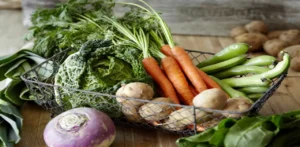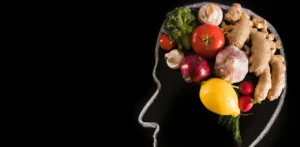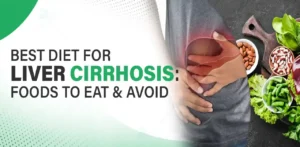Contents
High blood pressure, also known as hypertension, is a common yet serious health condition that affects millions of people worldwide. It’s often called the “silent killer” because it typically has no symptoms but can lead to severe complications such as heart disease, stroke, and kidney failure if left uncontrolled. Fortunately, one of the most effective ways to manage hypertension is through dietary changes. In this article, we’ll explore the best foods and meal ideas for controlling high blood pressure, creating a hypertension-friendly nutrition plan, and promoting heart health.

Understanding High Blood Pressure
Before diving into specific dietary recommendations, let’s first understand what high blood pressure is and why it’s crucial to manage it. Blood pressure is the force of blood pushing against the walls of your arteries as your heart pumps it around your body. When this pressure is consistently too high, it can strain your heart and blood vessels, leading to serious health problems over time.
Several factors can contribute to high blood pressure, including genetics, age, lifestyle choices, and underlying health conditions like obesity, diabetes, and kidney disease. While some risk factors are beyond our control, adopting a healthy lifestyle, including a balanced diet, plays a significant role in managing and preventing hypertension.

Hypertension-Friendly Foods
When it comes to creating a hypertension-friendly diet, focus on foods that are low in sodium, saturated fats, and cholesterol while being rich in nutrients like potassium, magnesium, and fiber. Here are some key foods to include in your high blood pressure diet:
- Fruits and Vegetables: These are high in potassium, which helps balance sodium levels in the body, crucial for maintaining healthy blood pressure. Aim for a variety of colorful fruits and vegetables such as bananas, oranges, leafy greens, and tomatoes.
- Whole Grains: Opt for whole grains like brown rice, quinoa, whole wheat bread, and oats over refined grains. Whole grains are rich in fiber, which can help lower blood pressure and improve heart health.
- Lean Proteins: Choose lean sources of protein such as skinless poultry, fish, legumes, and tofu. These options are lower in saturated fat and cholesterol compared to red meat and processed meats.
- Healthy Fats: Include sources of healthy fats in your diet such as avocados, nuts, seeds, and olive oil. These fats can help reduce inflammation and support cardiovascular health.
- Dairy or Alternatives: Opt for low-fat or fat-free dairy products like yogurt and milk, or choose dairy alternatives like almond milk or soy milk. These options provide calcium and vitamin D without the added saturated fats.

Foods for Blood Pressure Control
Creating a hypertension nutrition plan involves not only choosing the right foods but also being mindful of portion sizes and cooking methods. Here are some tips for effectively controlling blood pressure through diet:
- Monitor Sodium Intake: Reduce your intake of processed and packaged foods, which are often high in sodium. Instead, flavor your meals with herbs, spices, lemon juice, or vinegar.
- Limit Alcohol and Caffeine: Excessive alcohol and caffeine consumption can raise blood pressure. If you drink alcohol, do so in moderation, and opt for decaffeinated beverages when possible.
- Read Labels: Pay attention to nutrition labels and choose products that are low in sodium, saturated fats, and added sugars. Aim for foods with more fiber and nutrients per serving.
- Practice Portion Control: Be mindful of portion sizes, especially when dining out or snacking. Use smaller plates and avoid oversized servings to prevent overeating.
Also Read: “A Complete Guide to Blood Cancer Diet and Healthy Eating”

Hypertension Nutrition Tips
In addition to specific foods, consider these additional nutrition tips to help manage high blood pressure effectively:
- Stay Hydrated: Drink plenty of water throughout the day to stay hydrated, which supports overall cardiovascular health.
- Manage Stress: Chronic stress can contribute to high blood pressure. Practice stress-reducing techniques such as meditation, yoga, or deep breathing exercises.
- Be Consistent: Consistency is key to maintaining healthy blood pressure levels. Stick to your dietary plan and make gradual, sustainable changes rather than drastic shifts.
- Work with a Dietitian: If you’re unsure about creating a hypertension-friendly diet plan, consider consulting with a registered dietitian who can personalize recommendations based on your individual needs and preferences.

Best Foods for Hypertension
Now that we’ve covered the basics of a hypertension-friendly diet, let’s explore some delicious recipes and meal ideas that are perfect for managing high blood pressure:
- Mediterranean Salmon Salad: Combine grilled salmon with mixed greens, cherry tomatoes, cucumbers, olives, and a drizzle of olive oil and lemon juice for a heart-healthy and flavorful meal.
- Quinoa and Black Bean Bowl: Cooked quinoa mixed with black beans, diced bell peppers, corn, avocado slices, and a sprinkle of cilantro makes for a nutrient-packed and satisfying bowl.
- Vegetable Stir-Fry: Stir-fry a variety of colorful vegetables such as broccoli, bell peppers, carrots, and snap peas with tofu or lean chicken, and season with low-sodium soy sauce and garlic for a quick and nutritious dinner.
- Greek Yogurt Parfait: Layer Greek yogurt with fresh berries, nuts or granola, and a drizzle of honey for a delicious and calcium-rich dessert or snack option.
By incorporating these hypertension-friendly recipes and meal ideas into your diet, you can take proactive steps towards managing your high blood pressure and promoting overall heart health.
Managing high blood pressure through diet is a proactive and effective approach to safeguarding your cardiovascular health. By focusing on nutrient-rich foods, limiting sodium and unhealthy fats, and adopting healthy eating habits, you can create a hypertension-friendly nutrition plan that supports your well-being. Remember to consult with healthcare professionals, such as dietitians and doctors, for personalized guidance and monitoring of your blood pressure levels. With dedication and consistency, you can take control of your health and reduce the risks associated with hypertension.



